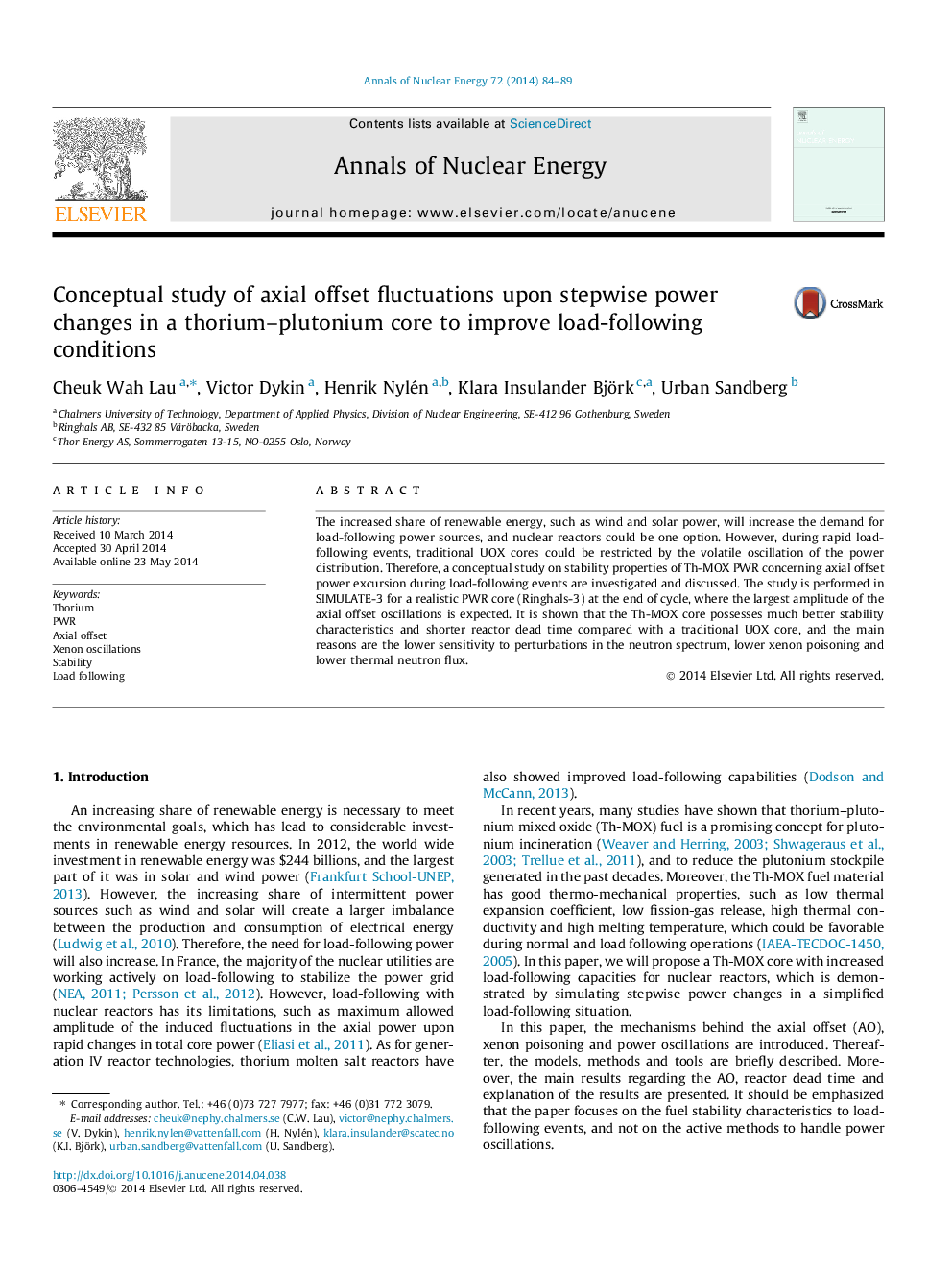| Article ID | Journal | Published Year | Pages | File Type |
|---|---|---|---|---|
| 1728118 | Annals of Nuclear Energy | 2014 | 6 Pages |
•Thorium–plutonium mixed oxide to improve nuclear reactors load-following capability.•SIMULATE-3 was the main calculation tool.•The Ringhals-3 PWR unit in Sweden was used as a reference.•Lower xenon poisoning and shorter reactor dead time.
The increased share of renewable energy, such as wind and solar power, will increase the demand for load-following power sources, and nuclear reactors could be one option. However, during rapid load-following events, traditional UOX cores could be restricted by the volatile oscillation of the power distribution. Therefore, a conceptual study on stability properties of Th-MOX PWR concerning axial offset power excursion during load-following events are investigated and discussed. The study is performed in SIMULATE-3 for a realistic PWR core (Ringhals-3) at the end of cycle, where the largest amplitude of the axial offset oscillations is expected. It is shown that the Th-MOX core possesses much better stability characteristics and shorter reactor dead time compared with a traditional UOX core, and the main reasons are the lower sensitivity to perturbations in the neutron spectrum, lower xenon poisoning and lower thermal neutron flux.
